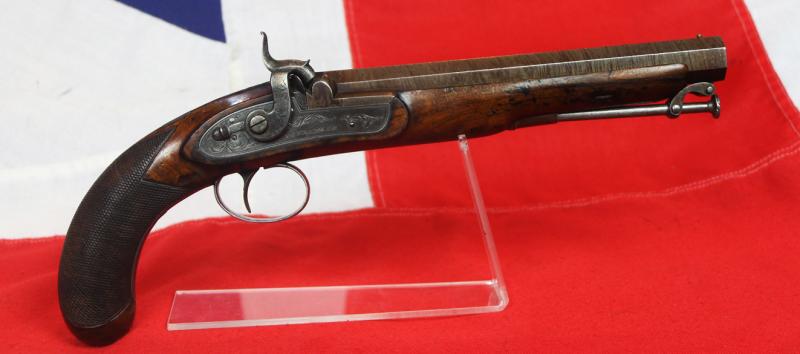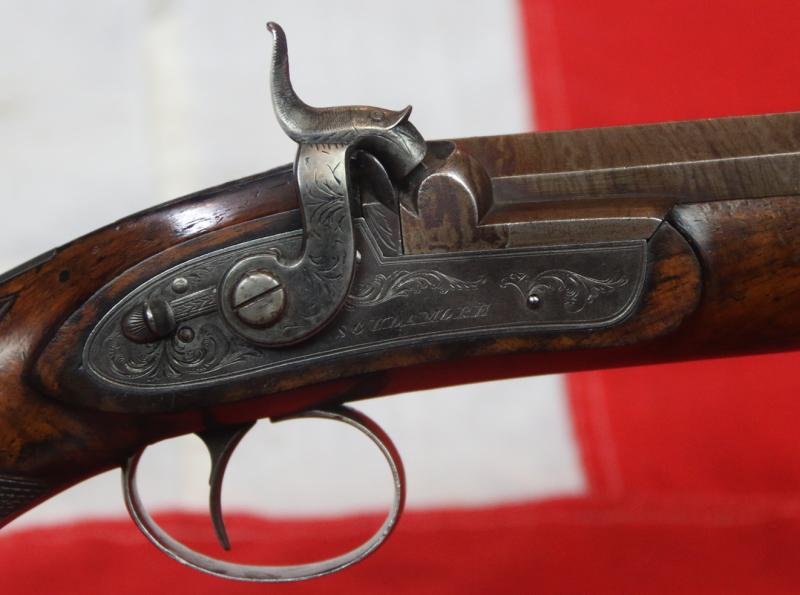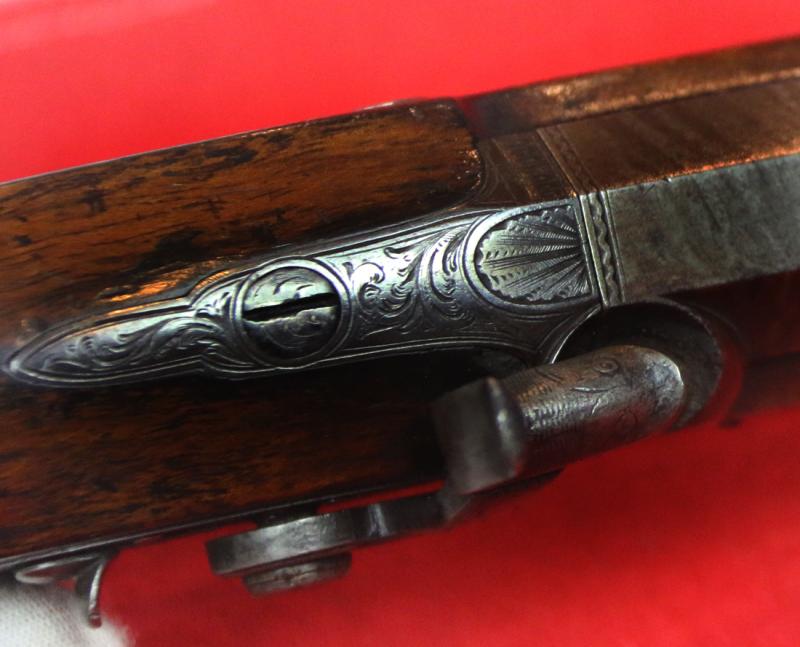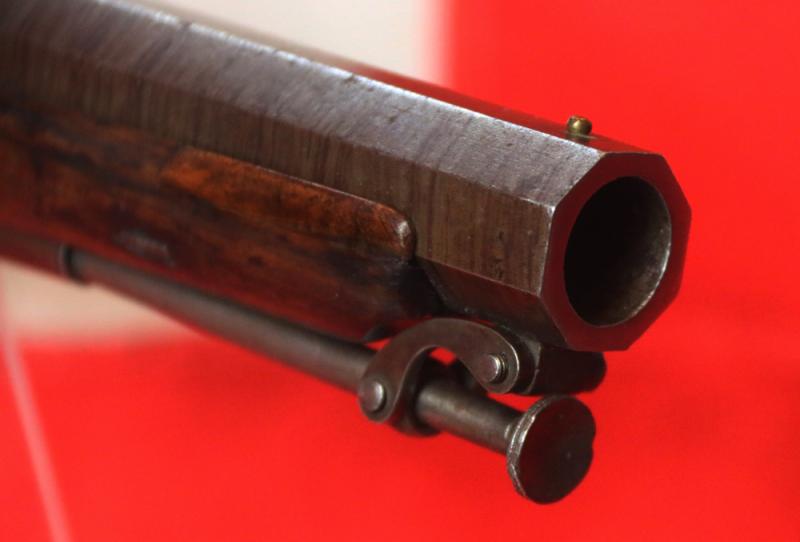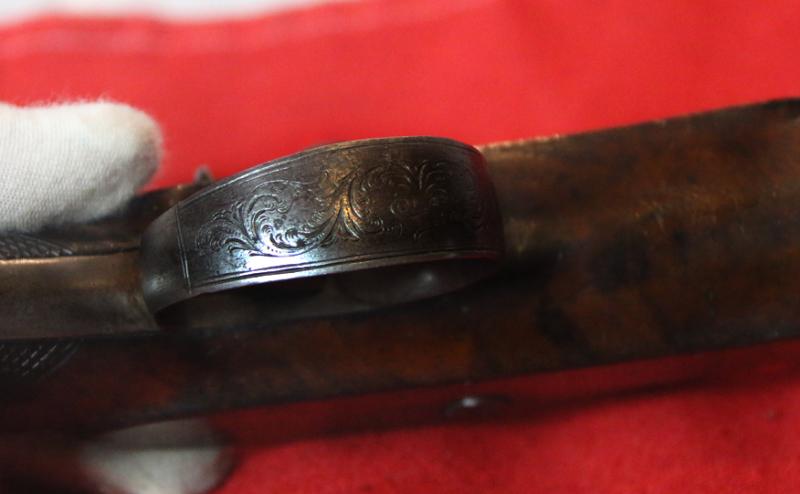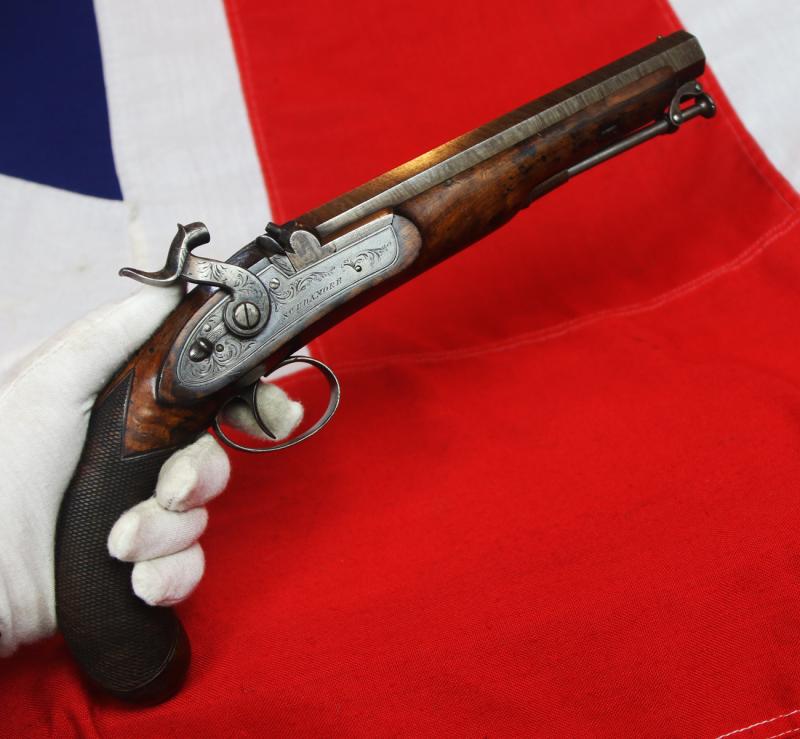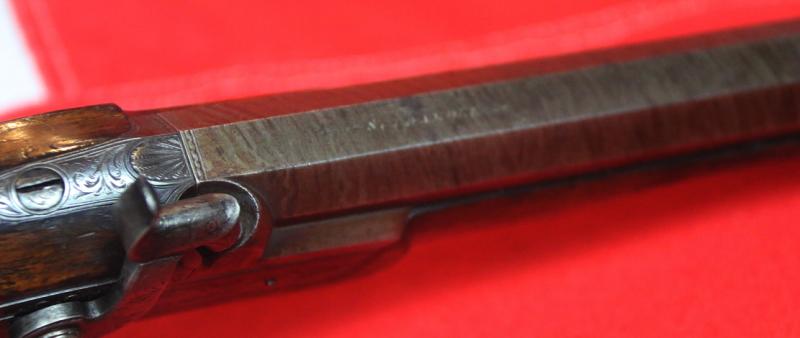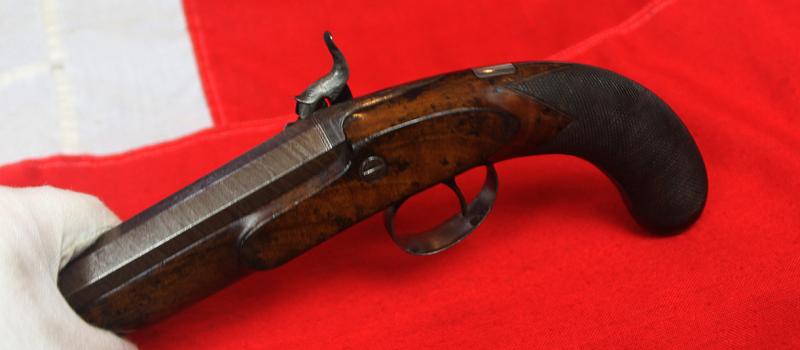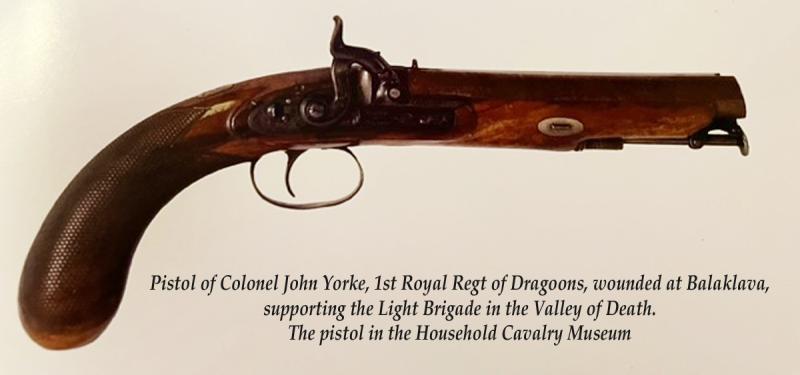A Fabulous Quality Crimean War Cavalry Officer's Pistol of Carbine Bore, Damascus Barrel with Paget Style Captive Ramrod. Near Identical to the Pistol of Colonel John Yorke, 1st Royal Regt of Dragoons,.
Part of superb Crimean War period collectables we have just acquired. Beautifully scroll engraved lock and mounts, in superb condition for age, with Damascus twist barrel with hook breech and barrel slide, 'Paget' captive ramrod, juglans regia walnut stock with micro chequering and silver escutcheon. Sliding safety to lock. Dolphin percussion hammer. Excellent tight and crisp action.
Photo in the gallery of a near identical pistol, also of carbine bore, showing all the same features as this pistol, such as sliding safety, hook breech Damascus barrel retained with barrel slides, fine walnut stock with micro chequring and paget swivel ramrod. The pistol of Colonel John Yorke, 1st Royal Regt of Dragoons, wounded at Balaklava, supporting the Light Brigade in the Valley of Death. The pistol in the household Cavalry Museum.
This cavalry officer's pistol is absolutely typical of the type carried by some officer's that took part in the charge, and may very well have been used by one.
The Charge of the Light Brigade {Aka, Into the Valley of Death} was a world famous military action undertaken by British light cavalry against Russian forces during the Battle of Balaclava in the Crimean War, resulting in many casualties to the cavalry. On 25 October 1854, the Light Brigade, led by Lord Cardigan, mounted a frontal assault against a Russian artillery battery which was well prepared with excellent fields of defensive fire. The charge was the result of a misunderstood order from the commander in chief, Lord Raglan, who had intended the Light Brigade to attack a different objective for which light cavalry was better suited, to prevent the Russians from removing captured guns from overrun Turkish positions. The Light Brigade made its charge under withering direct fire and reached its target, scattered some of the gunners but was forced to retreat immediately.
The events were the subject of Alfred, Lord Tennyson's narrative poem "The Charge of the Light Brigade" (1854), published six weeks after the event. Its lines emphasise the valour of the cavalry in carrying out their orders regardless of the risk. Responsibility for the miscommunication has remained controversial, as the order was vague and Captain Louis Nolan, who delivered the written orders with some verbal interpretation, was killed in the first minute of the assault.
Out of interest, around 30 years ago we owned the very foul weather sabretache of Captain Nolan that he used, and carried, that very order to charge the Russian guns into the Valley of Death. The sabretache, was the one upon which he fell, when he perished when fatally wounded within sixty seconds of the commencement of charge. It came to us through the family ownership and had previously been on display in two museums until the mid 20th century.
The charge;
The Light Brigade set off down the valley with Cardigan in front, leading the charge on his horse Ronald. Almost at once, Nolan rushed across the front, passing in front of Cardigan. It may be that he realised that the charge was aimed at the wrong target and was attempting to stop or turn the brigade, but he was killed by an artillery shell and the cavalry continued on its course. Captain Godfrey Morgan was close by:
The first shell burst in the air about 100 yards in front of us. The next one dropped in front of Nolan's horse and exploded on touching the ground. He uttered a wild yell as his horse turned round, and, with his arms extended, the reins dropped on the animal's neck, he trotted towards us, but in a few yards dropped dead off his horse. I do not imagine that anybody except those in the front line of the 17th Lancers saw what had happened.
We went on. When we got about two or three hundred yards the battery of the Russian Horse Artillery opened fire. I do not recollect hearing a word from anybody as we gradually broke from a trot to a canter, though the noise of the striking of men and horses by grape and round shot was deafening, while the dust and gravel struck up by the round shot that fell short was almost blinding, and irritated my horse so that I could scarcely hold him at all. But as we came nearer I could see plainly enough, especially when I was about a hundred yards from the guns. I appeared to be riding straight on to the muzzle of one of the guns, and I distinctly saw the gunner apply his fuse. I shut my eyes then, for I thought that settled the question as far as I was concerned. But the shot just missed me and struck the man on my right full in the chest.
In another minute I was on the gun and the leading Russian's grey horse, shot, I suppose, with a pistol by somebody on my right, fell across my horse, dragging it over with him and pinning me in between the gun and himself. A Russian gunner on foot at once covered me with his carbine. He was just within reach of my sword, and I struck him across his neck. The blow did not do much harm, but it disconcerted his aim. At the same time a mounted gunner struck my horse on the forehead with his sabre. Spurring "Sir Briggs," he half jumped, half blundered, over the fallen horses, and then for a short time bolted with me. I only remember finding myself alone among the Russians trying to get out as best I could. This, by some chance, I did, in spite of the attempts of the Russians to cut me down.
The Light Brigade faced withering fire from three sides which devastated their force on the ride, yet they were able to engage the Russian forces at the end of the valley and force them back from the redoubt. Nonetheless, they had suffered heavy casualties and were soon forced to retire. The surviving Russian artillerymen returned to their guns and opened fire with grapeshot and canister shot, indiscriminately at the mêlée of friend and foe before them
Code: 24948
2495.00 GBP

